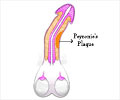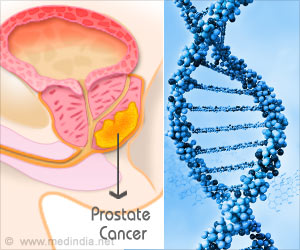An international team of researchers have urged the physicians to expand ED symptom screening to include younger and middle-aged men.

As many as 30 million American men suffer from ED, or the inability to maintain an erection sufficient for sexual intercourse. ED and cardiovascular disease share a common cause: narrowing of the arteries, resulting in reduced or obstructed blood flow to the organs. They also share similar risk factors, including smoking, diabetes, obesity and high blood pressure. Because the penile arteries are just a fraction smaller than the arteries supplying blood to the heart, symptoms of conditions that can narrow the arteries, such as arteriosclerosis, are likely to present first in the form of erection problems. That's why it is also believed that the more severe the ED, the greater the risk of heart disease-related events, such as heart attack and stroke.
"Erectile dysfunction represents an important first step toward heart disease detection and reduction, yet many health care providers and patients assume it's just a sign of old age, so it may not be something that comes up during an annual physical with a younger man who doesn't fit the ED 'stereotype,'" says lead author Martin Miner, M.D., chief of family medicine and co-director of the Men's Health Center at The Miriam Hospital.
"That's why we urge physicians to discuss sexual function with the majority of their male patients – including diabetic men of all ages and men over the age of thirty with some of the traditional heart disease risk factors, like smoking or a family history," he adds.
Although not all men with ED are at increased risk for cardiovascular disease, Miner says it is the physician's responsibility to make that determination based on aggressive workup and testing. If the patient is found to be at risk, the patient can then receive intensive risk factor management.
Miner and colleagues conducted a literature review of 40 studies that suggest ED is a significant predictor for cardiovascular disease in two populations: men under the age of 60 and men with diabetes. Their analysis supports several widely-held theories, including the role of ED as a significant red flag for cardiovascular disease in younger and middle-aged men.
For example, in the Mayo Clinic's Olmsted County Study, a large, epidemiological study cohort of men from Olmsted County, Minnesota, men 40 to 49 years old with ED were twice as likely to develop coronary artery disease as those who did not have ED. However, ED had less predictive value for men 70 years and older.
Several studies, including a large analysis of more than 6,300 men enrolled in the ADVANCE (Action in Diabetes and Vascular Disease: Preterax and Diamicron Modified-Release Controlled Evaluation) trial, suggest ED is a particularly powerful indicator of cardiovascular disease in diabetic men as well, prompting researchers to call for ED symptom screening in all men with type 2 diabetes.
Miner points out early identification of men at risk for cardiovascular disease has the potential to lower health care costs and improve outcomes.
"There may be a 'window of curability' in which we can intervene early and stop the progression of heart disease," he says. "Also, it may be possible to someday use erectile function as a measurement to tell us if preventive interventions for heart disease are working."
Source-Eurekalert















